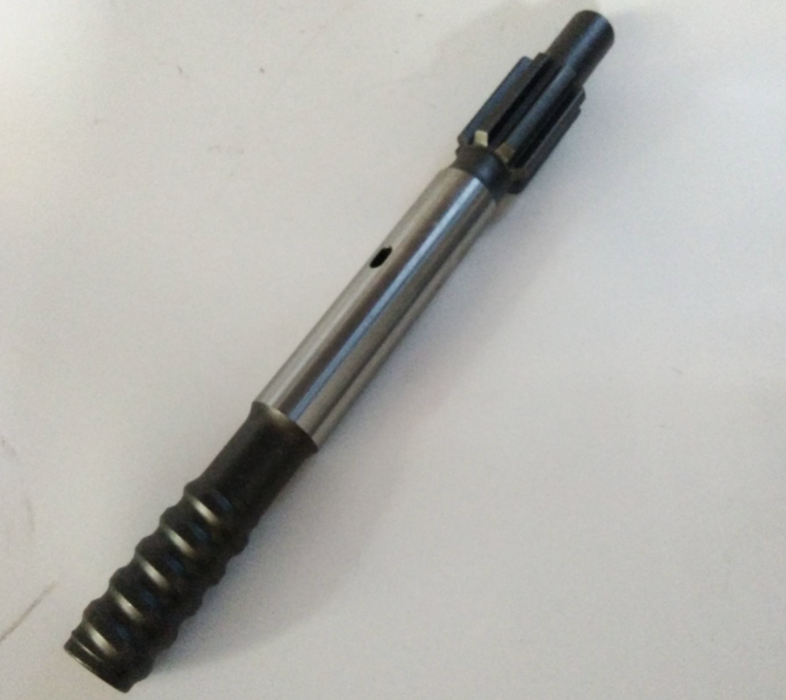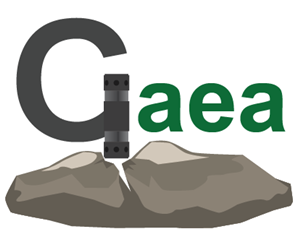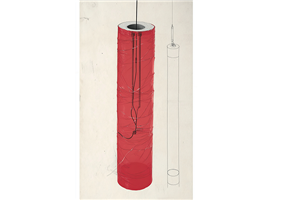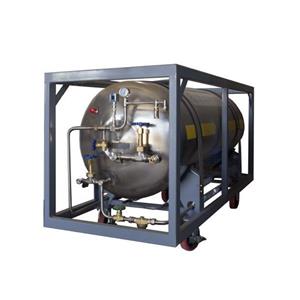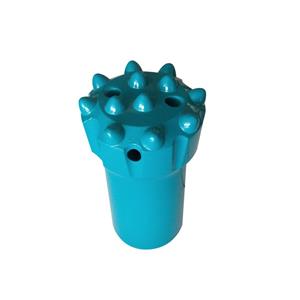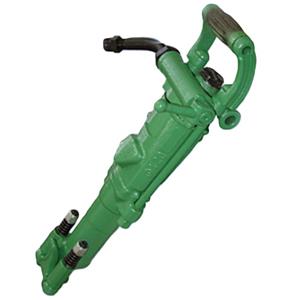Analysis of Causes of Damage to Rock Drilling Tools (rock drilling tools)
Rock drilling tools are consumables in all types of drilling operations. Over time they represent a major portion of drilling costs, so they deserve close attention. Minimizing cost while maximizing output requires continuous learning and summarizing best practices. Tool life depends both on tool quality and on correct, standardized use. A skilled operator can save significant consumable costs — even a good machine needs proper handling to perform well.
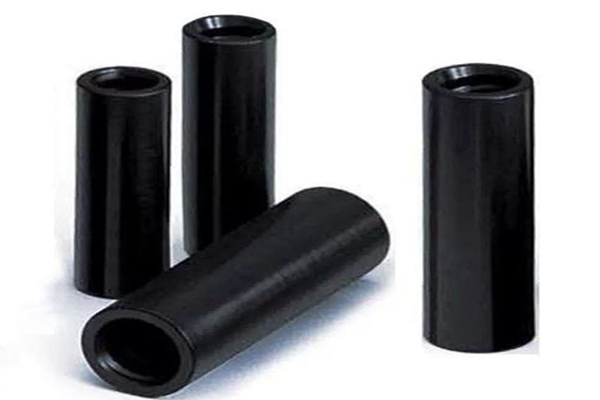
Below are common causes of drill-tool damage:
Misalignment in the tool assembly
Eccentricity among the shank adapter, coupling sleeve, and drilling rod causes bending deformation, induces stress, and prevents proper mating of the assembly, leading to loosened connections.
Mismatched feed (thrust) pressure
Too low: penetration rate drops, assemblies loosen, and transmitted energy is lost. This creates large transient stresses that can cause instantaneous separation at contact faces. Symptoms of insufficient feed pressure include tool overheating, audible “clacking” at connections, abnormal thread wear from overheating, and formation of erosion pits.
Too high: low bit rotation speed, increased risk of jamming, and greater bending stress in the drill rods.
Improper impact pressure
Incorrect impact pressure settings directly affect rotation speed, penetration efficiency, and tool life.
Incorrect rotation speed
Rotation speed must match bit diameter and the hammer’s impact frequency. An oversized bit generally requires lower rotation speed; excessive rotational speed can damage the bit’s cutting edges.
Rotary (rotational) pressure
Proper rotary pressure is crucial. It not only helps protect the drill string from jamming but also is a prerequisite to maintaining desired rotation speed. Controlling rotary pressure is key to preserving assembly tightness. Insufficient tightness often causes heating at connection points, thread surface spalling, premature thread wear, or even thread fracture.
Improper usage and maintenance
Mixing used (worn) tool assemblies with new components shortens overall service life. Misalignment when making up rods, sand or debris on threads, and failure to apply thread lubricant during assembly also accelerate damage. “Dry firing” (impacting without effective contact with rock) causes the most severe damage and should be avoided.
Conclusion Drilling has always been a demanding enterprise. Protecting drill tools requires coordinated effort among material suppliers, manufacturers, and field operators — it is a systemic task, not something one party can perfect alone. While competition drives improvement, collaboration within the industry is also necessary to advance the field. Our main opponent is our own conservative, outdated practices: to progress we must learn and innovate continuously.
